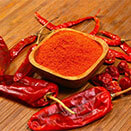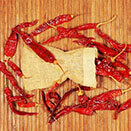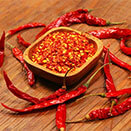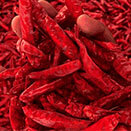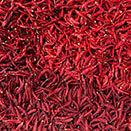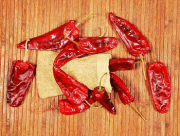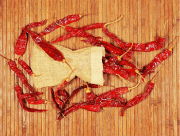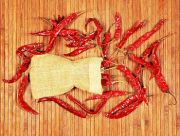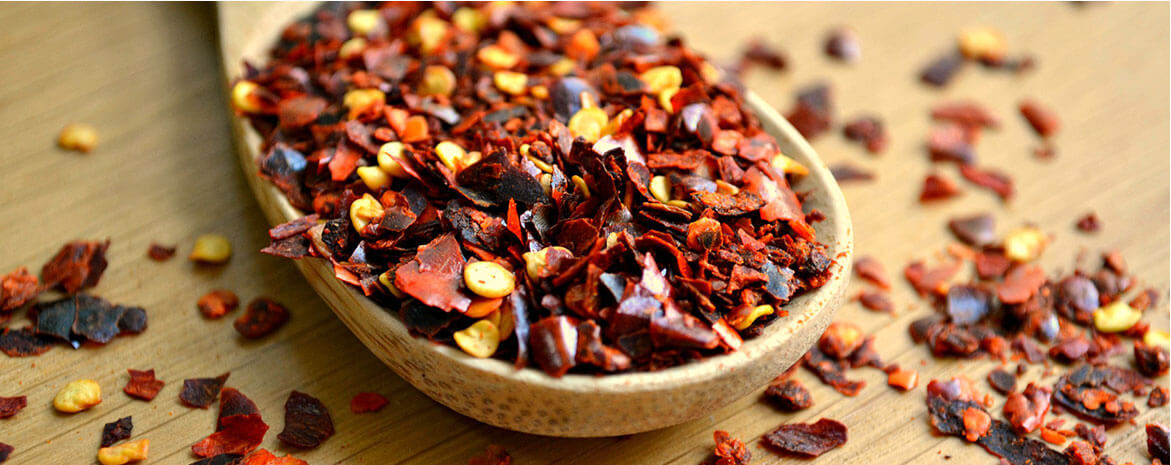
Chilli

Chilli
-
Chilli Origin
Chilli Origins
The origin of chilies is believed to be as old as 7000 B.C. used in Mexico. Chilies were grown and cultivated from 3500 BC. Mexicans used it to spice up their food. Chili was brought to the rest of the world by Christopher Columbus who discovered America in 1493. Christopher had set from Spain to reach India to bring spices such as pepper back to his country. Christopher not only mistook America for India, but also mistook chili as the black pepper. That is how the chili got the name ‘chile pepper.’ He took chile pepper back to Spain where it became a very famous spice.
Chili spread to rest of the European countries. Chili became the indispensable spice in European cuisines. Chili became popular in Portuguese. In 1498, the Portuguese explorer Vasco-da-Gama reached Indian shores bringing with him the pungent spice.
Chili seeds were brought to North America for cultivation. In 1888, experiments began for cross breeding of chili plants. New breeds of chili plants were evolved. In 1906, a new variety of chili, Anaheim, was grown. Soon, more chili varieties were evolved such as strong breed of Mexican chile....
In 1912, Wilbur L. Scoville, a pharmacist found a new method to measure the pungency of the chili. This new method came to be known as Scoville Organoleptic Test. Unlike, earlier methods, the Scoville test was subjective and accurate.
There are more than 400 different varieties of chilies found all over the world. The world’s hottest chili “Naga Jolokia” is cultivated in hilly terrain of Assam in a small town Tezpur, India. Chili became extremely popular in India after it was first brought to India by Vasco-da-Gama. Chili found its way in ayurveda, the traditional Indian medical system. According to ayurveda, chili has many medicinal properties such as stimulating good digestion and endorphins, a natural pain killer to relieve pains.
Today, it is unimaginable to think of India cuisine without the hot spice, chili. India has become world’s largest producer and exporter of chili, exporting to USA, Canada, UK, Saudi Arabia, Singapore, Malaysia, Germany and many countries across the world. It contributes 25% of world’s total production of chili. Some of the hottest chilies are grown in India. Indian chilies have been dominating international chili market. Majority of chili grown in India is cultivated in states such as Andhra Pradesh, Maharashtra, Karnataka, Gujarat, Tamil Nadu and Orissa.
-
Chilli Names
International Names
 Spanish : Pimenton
Spanish : Pimenton French : Puvre de Guinee
French : Puvre de Guinee
 German : Paprika
German : Paprika Arabic : Filfil Ahmar
Arabic : Filfil Ahmar
 Dutch : Spaanse Peper
Dutch : Spaanse Peper Italian : Peperone
Italian : Peperone
 Portuguese : Pimento
Portuguese : Pimento
 Russian : Struchkovy pyeret
Russian : Struchkovy pyeret
 Japanese : Togarashi
Japanese : Togarashi Chinese : Hesiung Yali chiao
Chinese : Hesiung Yali chiao British : Chillies(Hot) Pepper(Sweet)
British : Chillies(Hot) Pepper(Sweet)
Local Names
 Hindi : Lal mirch
Hindi : Lal mirch Bengali : Lanka, Lankamorich
Bengali : Lanka, Lankamorich Gujarati : Marcha
Gujarati : Marcha Kannada : Mensina kai
Kannada : Mensina kai Malayalam : Mulaku
Malayalam : Mulaku Marathi : Mirchi
Marathi : Mirchi Oriya : Lanka
Oriya : Lanka Punjabi : Lalmirch
Punjabi : Lalmirch Tamil : Milagay
Tamil : Milagay  Telugu : Mirapa kaya
Telugu : Mirapa kaya  Urdu : Lalmirch
Urdu : Lalmirch
- Chilli Formats
-
Chilli Varieties
Chilli Varieties
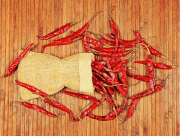

Chilli Origins
The origin of chilies is believed to be as old as 7000 B.C. used in Mexico. Chilies were grown and cultivated from 3500 BC. Mexicans used it to spice up their food. Chili was brought to the rest of the world by Christopher Columbus who discovered America in 1493. Christopher had set from Spain to reach India to bring spices such as pepper back to his country. Christopher not only mistook America for India, but also mistook chili as the black pepper. That is how the chili got the name ‘chile pepper.’ He took chile pepper back to Spain where it became a very famous spice.
Chili spread to rest of the European countries. Chili became the indispensable spice in European cuisines. Chili became popular in Portuguese. In 1498, the Portuguese explorer Vasco-da-Gama reached Indian shores bringing with him the pungent spice.
Chili seeds were brought to North America for cultivation. In 1888, experiments began for cross breeding of chili plants. New breeds of chili plants were evolved. In 1906, a new variety of chili, Anaheim, was grown. Soon, more chili varieties were evolved such as strong breed of Mexican chile....
In 1912, Wilbur L. Scoville, a pharmacist found a new method to measure the pungency of the chili. This new method came to be known as Scoville Organoleptic Test. Unlike, earlier methods, the Scoville test was subjective and accurate.
There are more than 400 different varieties of chilies found all over the world. The world’s hottest chili “Naga Jolokia” is cultivated in hilly terrain of Assam in a small town Tezpur, India. Chili became extremely popular in India after it was first brought to India by Vasco-da-Gama. Chili found its way in ayurveda, the traditional Indian medical system. According to ayurveda, chili has many medicinal properties such as stimulating good digestion and endorphins, a natural pain killer to relieve pains.
Today, it is unimaginable to think of India cuisine without the hot spice, chili. India has become world’s largest producer and exporter of chili, exporting to USA, Canada, UK, Saudi Arabia, Singapore, Malaysia, Germany and many countries across the world. It contributes 25% of world’s total production of chili. Some of the hottest chilies are grown in India. Indian chilies have been dominating international chili market. Majority of chili grown in India is cultivated in states such as Andhra Pradesh, Maharashtra, Karnataka, Gujarat, Tamil Nadu and Orissa.
International Names
 Spanish : Pimenton
Spanish : Pimenton French : Puvre de Guinee
French : Puvre de Guinee
 German : Paprika
German : Paprika Arabic : Filfil Ahmar
Arabic : Filfil Ahmar
 Dutch : Spaanse Peper
Dutch : Spaanse Peper Italian : Peperone
Italian : Peperone
 Portuguese : Pimento
Portuguese : Pimento
 Russian : Struchkovy pyeret
Russian : Struchkovy pyeret
 Japanese : Togarashi
Japanese : Togarashi Chinese : Hesiung Yali chiao
Chinese : Hesiung Yali chiao British : Chillies(Hot) Pepper(Sweet)
British : Chillies(Hot) Pepper(Sweet)
Local Names
 Hindi : Lal mirch
Hindi : Lal mirch Bengali : Lanka, Lankamorich
Bengali : Lanka, Lankamorich Gujarati : Marcha
Gujarati : Marcha Kannada : Mensina kai
Kannada : Mensina kai Malayalam : Mulaku
Malayalam : Mulaku Marathi : Mirchi
Marathi : Mirchi Oriya : Lanka
Oriya : Lanka Punjabi : Lalmirch
Punjabi : Lalmirch Tamil : Milagay
Tamil : Milagay  Telugu : Mirapa kaya
Telugu : Mirapa kaya  Urdu : Lalmirch
Urdu : Lalmirch
Chilli Formats List
Chilli Varieties



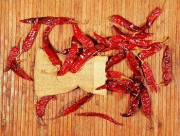
Be always updated with us
Sign in with our newsletter
 Thanks
Thanks

